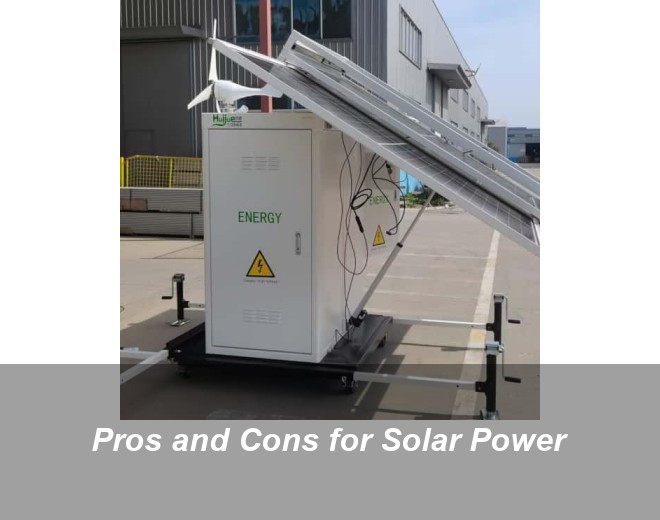Concentrated Solar Power Pros and Cons

Table of Contents
What Is Concentrated Solar Power?
Let's cut through the jargon. Concentrated solar power (CSP) uses mirrors to focus sunlight onto receivers that convert it into heat, which then drives turbines to generate electricity. Unlike regular solar panels that work directly with photons, CSP's sort of like using a magnifying glass to start a fire - but on an industrial scale.
The Sunny Side: CSP Advantages
Here's where CSP shines brighter than photovoltaic systems. First off, thermal energy storage lets CSP plants deliver electricity even when the sun's clocked out. Spain's Gemasolar plant, for instance, can provide 15 hours of power after sunset using molten salt storage. That's game-changing for grid stability.
Another plus? Hybrid potential. In South Africa's Northern Cape province, CSP plants work alongside coal facilities to reduce emissions while maintaining baseload power. The technology's also getting cheaper - the International Renewable Energy Agency reports CSP costs dropped 47% between 2010-2020.
Three Unbeatable Perks:
- Scalable energy storage (no rare earth metals needed)
- High-temperature heat for industrial uses (think steel production)
- Job creation in sunny, often arid regions
The Shadow Side: Key Challenges
But wait - is CSP all rainbows and unicorns? Hardly. The technology requires intense direct sunlight, limiting deployment to specific regions like the US Southwest or Australia's Outback. Water consumption's another pain point - wet-cooled CSP plants guzzle up to 3,700 liters per MWh. That's like filling 12 bathtubs for every household's daily electricity use.
Cost remains tricky too. While prices are falling, CSP's levelized cost of energy ($0.18-0.36/kWh) still trails behind wind and PV. And let's not forget the land footprint - the 392MW Ivanpah plant in California covers 3,500 acres. That's 50% more space than needed for equivalent PV capacity.
When the Desert Speaks: A Moroccan Case Study
Morocco's Noor Complex shows both promise and pitfalls. This mega-project in the Sahara delivers 510MW of clean energy, powering over a million homes. But construction costs hit $2.5 billion - partly funded by EU grants. The plant uses advanced dry cooling, cutting water use by 80%. Yet local communities still debate whether the benefits outweigh the dust storms created by mirrored surfaces.
As project manager Ahmed Baroudi admits: "We're pioneers in uncharted territory. Every sunrise brings new technical puzzles." This tension between ambition and reality defines today's CSP landscape.
Your Burning Questions Answered
Q: Can CSP work in cloudy countries?
Not really. CSP needs direct normal irradiance above 2,000 kWh/m²/year. Germany's trying experimental systems, but output's dismal compared to Spain or Chile.
Q: How long do CSP plants last?
Most facilities are designed for 25-30 years. The oldest operating plant (California's SEGS IX) has been running since 1990!
Q: Are birds really getting fried by CSP beams?
Occasionally. Ivanpah's "solar flux" has caused some bird fatalities, but operators now use radar to detect and temporarily dim mirrors when flocks approach.
Q: What's the next big innovation?
Supercritical CO2 turbines could boost efficiency by 20%. Pilot tests in Texas look promising, but commercialization's still 5-8 years out.
Q: Should developing nations prioritize CSP?
Depends. For sun-rich countries with growing grids (like Namibia or Saudi Arabia), CSP offers stable power. Others might better spend on PV+storage combos.
Related Contents

A House Using Solar Power Hydro Power and Wind Power
Ever opened your utility bill and felt that sinking dread? You’re not alone. The average U.S. household spends $1,500 annually on electricity—money that literally goes up in smoke. Now picture this: What if your home could generate its own power using solar panels, a mini hydro turbine, and a wind generator? No more grid dependency, no more rate hikes.

allintitle:solar power attic fan pros cons
Let's cut through the marketing fluff. A solar power attic fan uses photovoltaic panels to spin blades that exhaust hot air from your attic space. Simple enough, right? Well, here's the kicker - most models generate 10-40 watts of power, which translates to moving about 800-1,200 cubic feet of air per minute. But wait, does that actually translate to meaningful temperature reduction?

Pros and Cons About Solar Power
Let's face it – solar power isn't just some trendy eco-fad. In Germany, they've generated 56% of their electricity from renewables last quarter, with solar leading the charge. The technology's matured like a fine wine, but what's really driving this global shift?

Pros and Cons for Solar Power
Ever wondered why your neighbor suddenly installed those shiny panels last month? Solar energy isn't just trending—it's rewriting global energy rules. In 2023 alone, solar installations grew 35% worldwide, with China manufacturing 80% of photovoltaic cells. But hold on—is this solar power revolution all sunshine and rainbows?

Are Concentrated Solar Power Closer to Large Cities
Cities consume 78% of global energy but occupy just 3% of Earth's land. Now here's the kicker – most concentrated solar power plants sit hundreds of miles from these energy-hungry urban centers. Why are we building solar farms in deserts when the demand's next to skyscrapers?




 Inquiry
Inquiry Online Chat
Online Chat